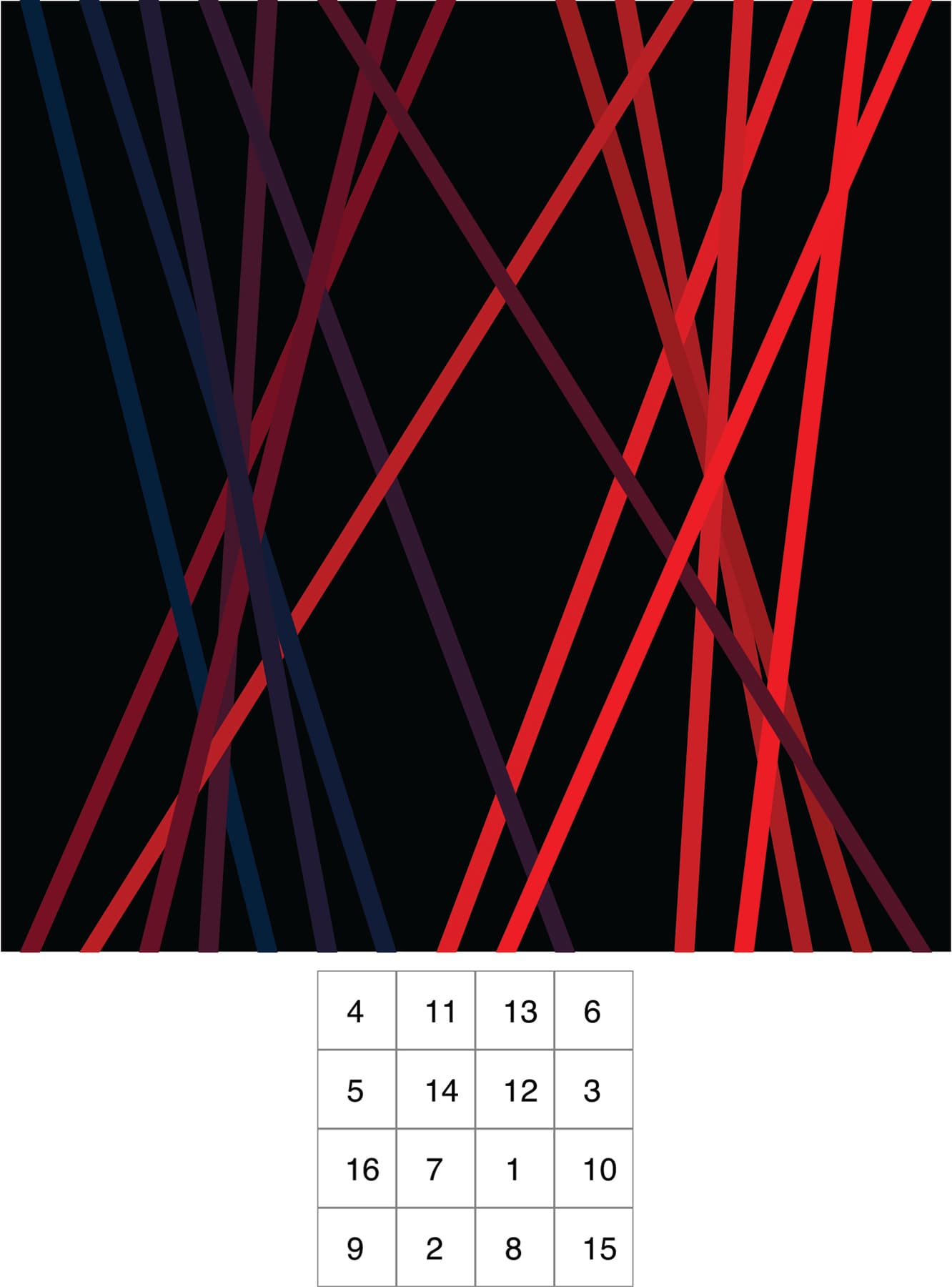Hans Dehlinger
Artists
Hans Dehlinger
Prof. i.R., University of Kassel, Germany
School of Art, University of Kassel, Germany
Kassel / Berlin
Statement
For the work presented here, it is assumed, order of some sort is a contributing factor to aesthetic value. A magic square is known as the arrangement of n x n numbers, such that any column, row or diagonal adds up to the same number. Magic squares are often placed in the recreational corner of mathematics, but they offer interesting strategies to exploit mathematical order for algorithmically generated fine-art. A project, drawing on magic squares as algorithmic input for the generation of aesthetic events has been carried out in 2010 by artists and programmers at the Media Research Center of Sun-Yat-Sen University in Guangzhou, China. In a joint effort, artists designed schemes for visual representations, and the programmers implemented them. The Center specializes in project oriented joint work between artists and programmers. In the presented work, we make use of the 4x4 magic square only. Each artist presents one scheme.
Artworks

H3-magic-square_8_13.01
15" x 15"
print on canvas
2010

H3-magic-square_4_15.01
15" x 15"
print on canvas
2010

H3-magic-square_13_6.01
15" x 15"
print on canvas
2010